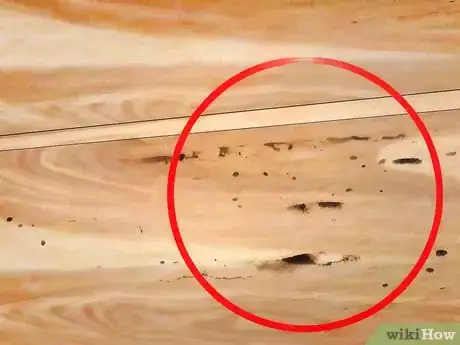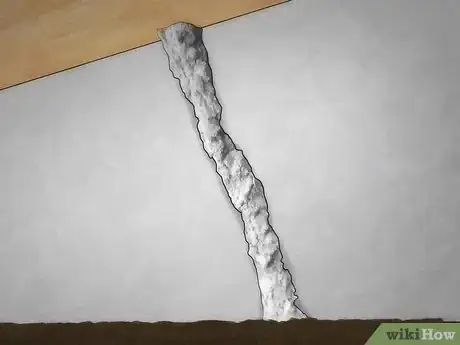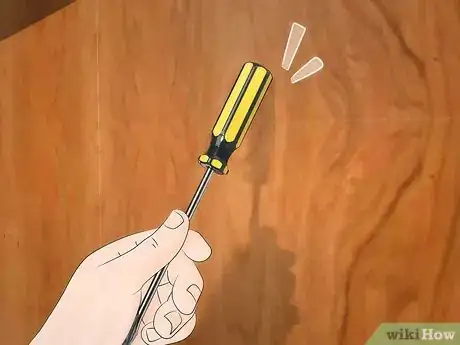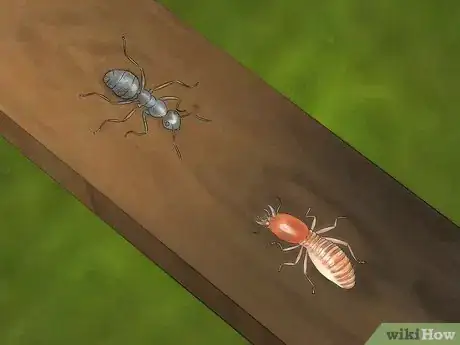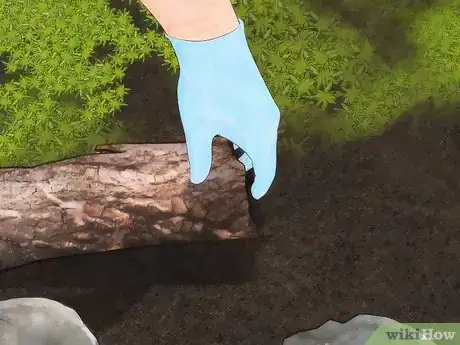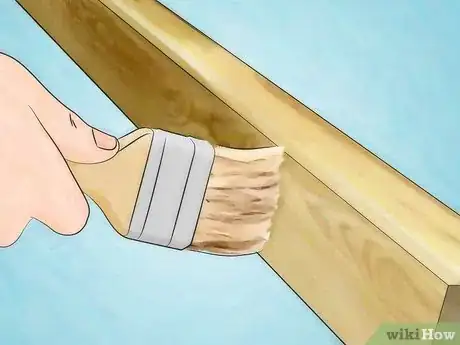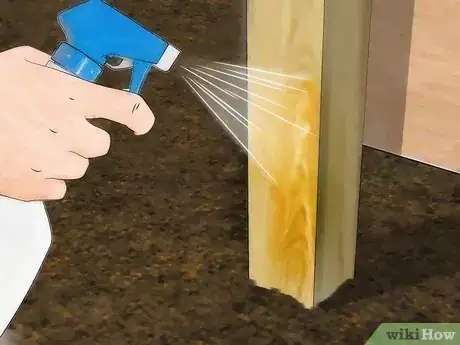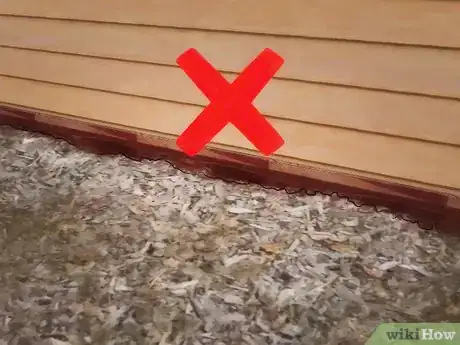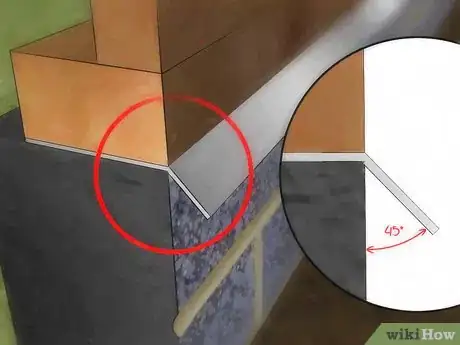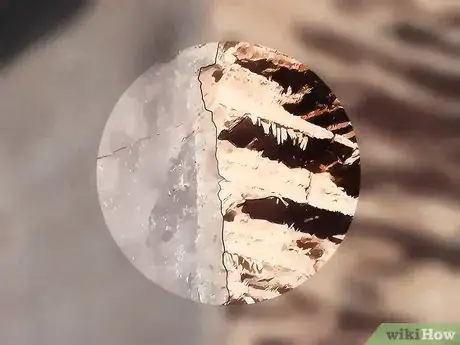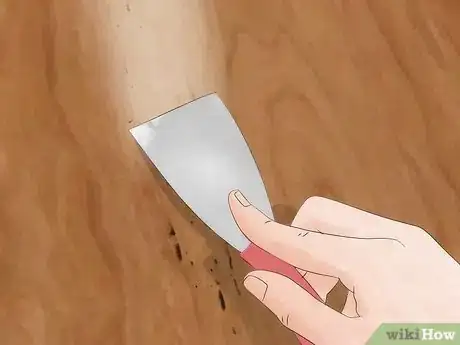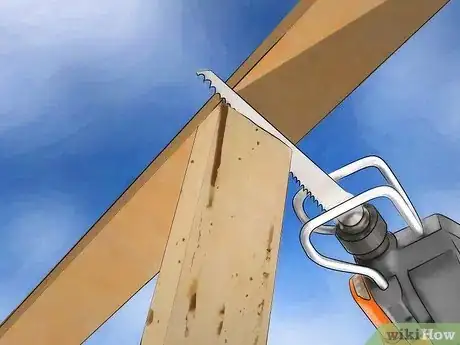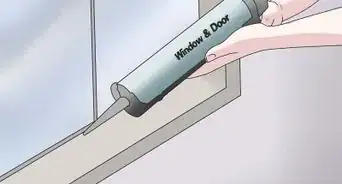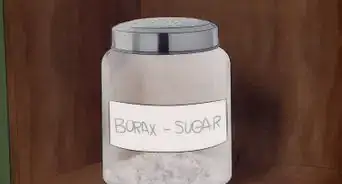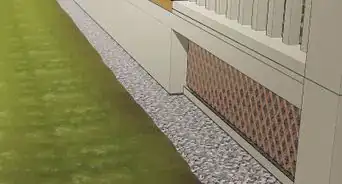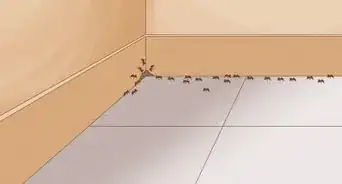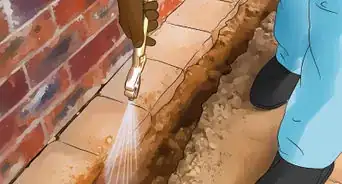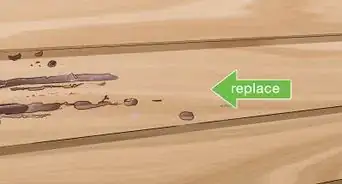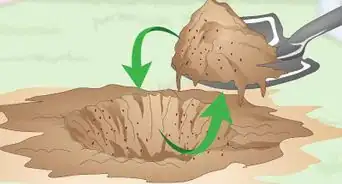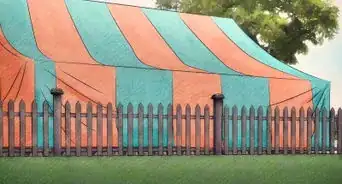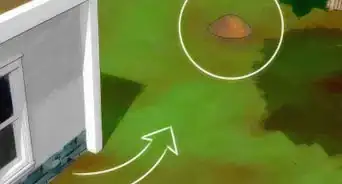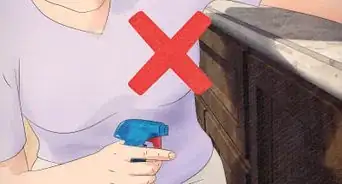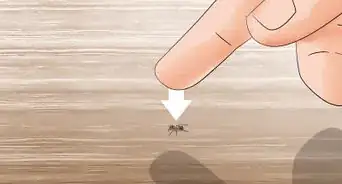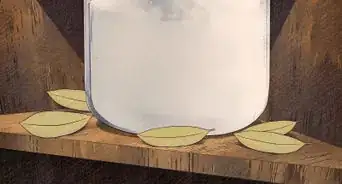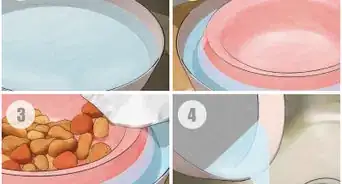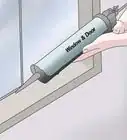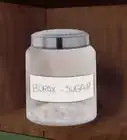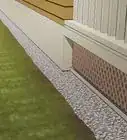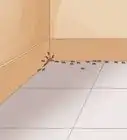This article was co-authored by Hussam Bin Break. Hussam Bin Break is a Certified Commercial Pesticide Applicator and Operations Manager. He and his brother Hussam co-founded Diagno Pest Control in the greater Philadelphia area in 2018, and have since expanded their services to include the New Jersey market. Diagno Pest Control has received Home Advisor's Top Rated and Elite Service Badges for quality of work and customer service.
wikiHow marks an article as reader-approved once it receives enough positive feedback. In this case, 86% of readers who voted found the article helpful, earning it our reader-approved status.
This article has been viewed 383,581 times.
Each year, termites cause significant damage to structures and crops in subtropical and warm, arid regions of the United States. Homeowners spend billions of dollars annually to treat infestations and repair termite damage. Early detection is crucial in limiting the scope of a colony's destructiveness, but it can be difficult to do. Homeowners seldom see termites, which lurk in subterranean nests and devour wood from inside walls, but there are ways to detect their presence.
Steps
Recognizing Signs of Termite Damage
-
1Inspect wood that's suspected to be damaged. If you suspect termite infestation, cut away a piece of wood at the site, if possible. Different types of termites leave distinctly different patterns of damage in wood.
- Subterranean termites devour soft wood and eat along the grain. This produces a distinct honeycomb pattern in the wood. It is crucial to stop subterranean termites as soon as the infestation is discovered. One type, the Formosan termite, is especially voracious, due largely to its massive numbers. Formosan termite colonies can number in the millions. Left unchecked, these pests can inflict considerable damage on homes, fences and utility poles.
- Drywood termites excavate large sections of wood by chewing along and against the wood grain. Their appearance is serious, but less so than most subterranean types. Drywood colonies usually number only a few thousand members and usually take several years to reach that number. Even when they reach such numbers, the entire colony eats only about 1⁄2 pound (0.23 kg) of wood per year.
-
2Look for other evidence of termite infestation. If you look carefully, you may be able to find clues of termite infestations, even if you're unable to see the insect itself. Visual signs of a termite colony can include floors that buckle or sag, loose tiles, pinpoint holes in drywall, damaged wood crumbles easily, or wood that sounds hollow when tapped. [1]
- Shelter tubes running from the soil to above-ground wood. Termites feast on dead trees, which is what many houses are made out of. They build small, enclosed passageways, or tubes, to ensure safe access to the building. The tubes are made from soil, saliva, fecal matter and other material. The tubes indicate that termites are active.
- Drywood termites live inside wooden constructions, including structural timber, furniture and hardwood floors. Because they live inside the areas they feed on, they're almost never seen outside the colony. But they do leave signs of their presence. Drywood termites push fecal pellets, called frass, outside their tunnels and chambers. These wood-colored mounds accumulate on flooring under infested sections of wood. [2]
Advertisement -
3Listen for clues. When conducting a periodic inspection of your home, tap sections of wood with a large screwdriver. If the wood sounds hollow, it might have been damaged by a wood-boring pest. Inside your home, hold a stethoscope or other device against different walls.
- You won't be able to hear termites, but carpenter ants make soft, rustling sounds as they rummage around in their chambers.
-
4Learn to distinguish termites from other household pests. Termites are just one of several types of wood-boring insects that damage homes. Carpenter ants and certain beetles also devour wood. It's important to determine which pest has infiltrated your home in order to chart the proper course of action against the colony. The easiest way to figure out if your home is threatened by termites or another pest is to closely examine the insect. Termites have certain characteristics different from ants and beetles.[3]
- Worker termites often are pale yellow in color and have soft bodies. Carpenter ants and beetles are usually much darker in color and have hard exoskeletons.
- Termites have straight antennae, very different from the elbowed antennae of carpenter ants.
- Because termites usually are hidden from view, it's easiest to determine the type of infestation by examining the winged version of the insect. When a termite colony gets large enough, winged reproductive termites will emerge to create a new colony. Termites have 2 sets of wings of the same size. In carpenter ants, the front wings are much longer than the rear set. Beetles have a set of hard wings that protect the delicate wings used for flight. The hard wings are part of the insect's exoskeleton and fold out from the body during flight.
- Termites have no discernible waist along their segmented bodies. Carpenter ants have a very distinct pedicle that joins the thorax to the abdomen.
Preventing and Repairing Termite Damage
-
1Contact a pest management professional if you have termites. Rather than attempting to get rid of termites on your own, let a professional handle the problem for you. Contact several pest management companies in your area and ask for quotes to eradicate the termites.
- Choose a company with a cost-effective approach in addition to good references or reviews.
-
2Get rid of dead trees and stumps around your yard. Decaying wood is top food source for termites and can host a colony of hungry termites.
- If you keep a lot of firewood or spare construction materials on hand, keep them as far away from your house as possible. If you bring this wood into your house, make sure to look for signs of termite presence like holes in the wood or hollowed feeling or sound.
-
3Use treated wood to build structures. The chemicals in treated wood can act as a deterrent to termites. If you build something outside like a gazebo, deck, or anything above ground, treated wood can help make it less appealing to a wandering colony of termites.
-
4Inspect common termite entry points. The most common way they get into your house is through wood to ground contact, such as a door frame, deck posts, or wood support beams. Address these spots by examining them for signs of termites regularly, get rid of any standing water in the area, and treat the wood with termite prevention like soil treatments that repel termites. [4]
-
5Avoid spreading mulch too close to your home. You can have mulch in your home but you'll want to avoid putting it anywhere that it may touch your siding or foundation. Mulch is often made from wood and creates moisture in the soil, which makes it a good home for termites.
- This also includes your plants. Woody shrubs that touch the wood foundation or siding of your house can house termites and also help hide their presence.
-
6Install termite shields. This can be especially helpful if you are currently constructing a home. These are metal shields put along the foundation of your home to deter termites. These should be made of a non-corroding metal with no gaps.
- This can prevent termites from getting access to the wood foundations or structures of your home.
-
7Decide how badly the wood is damaged. If the wood is completely hollowed out, or completely rotted, you will not be able to repair it and will need to replace the wood.
- Remove the damaged wood. Once you see there are parts of the wood that are damaged or completely rotten, you will want to use a chisel to remove these parts.
-
8Use a wood filler or hardener. You can fill in damaged parts of wood using a wood filler or hardener. Use a putty knife to spread the filler or hardener in parts of the wood that were damaged or ate away at by the termites. Allow it to dry overnight. [5]
- Make sure to get any bubbles out of the filler or hardener so that you do not leave any gaps in the wood. Wood filler is best for long hallowed out grooves and hardener is good for larger gaps.
-
9Replace the wood completely. If it is a structure like a deck, your best bet will be simply removing the affected pieces of wood and replacing them with new pieces.
- You can do this yourself or call a contractor, depending on how handy you are.
Expert Q&A
-
QuestionWhat is a natural way to repel termites?
 Hussam Bin BreakHussam Bin Break is a Certified Commercial Pesticide Applicator and Operations Manager. He and his brother Hussam co-founded Diagno Pest Control in the greater Philadelphia area in 2018, and have since expanded their services to include the New Jersey market. Diagno Pest Control has received Home Advisor's Top Rated and Elite Service Badges for quality of work and customer service.
Hussam Bin BreakHussam Bin Break is a Certified Commercial Pesticide Applicator and Operations Manager. He and his brother Hussam co-founded Diagno Pest Control in the greater Philadelphia area in 2018, and have since expanded their services to include the New Jersey market. Diagno Pest Control has received Home Advisor's Top Rated and Elite Service Badges for quality of work and customer service.
Pest Control Professional To prevent termites, try to have 6-12 inches around your home that are free of vegetation, trees, or anything else. Also, if water collects around your foundation walls, direct that water away from your home because moisture will attract termites.
To prevent termites, try to have 6-12 inches around your home that are free of vegetation, trees, or anything else. Also, if water collects around your foundation walls, direct that water away from your home because moisture will attract termites.
References
- ↑ http://www.termites.com/damage/
- ↑ https://extension.arizona.edu/sites/extension.arizona.edu/files/pubs/az1232.pdf
- ↑ http://www.cowleys.com/pests-we-treat/carpenter-ants/winged-carpenter-ant-vs-termite.html
- ↑ http://www.termites.com/damage/protection-prevention/how-termites-get-in-your-home/
- ↑ http://www.mrhandyman.com/blog/2013/august/repairing-wood-damage-from-termites-ants-and-other-insects/
About This Article
If you need to spot termite damage because of a suspected infestation, cut away a piece of wood from the site, if you can. Look for damage along the grain of the wood or sections that are missing. If you can't remove a piece of wood, inspect your property for wood that crumbles easily or wood that sounds hollow when your tap on it. If you find damaged wood, look around for termites, which are pale yellow in color and have soft bodies. To learn how to prevent and repair termite damage, keep reading.
